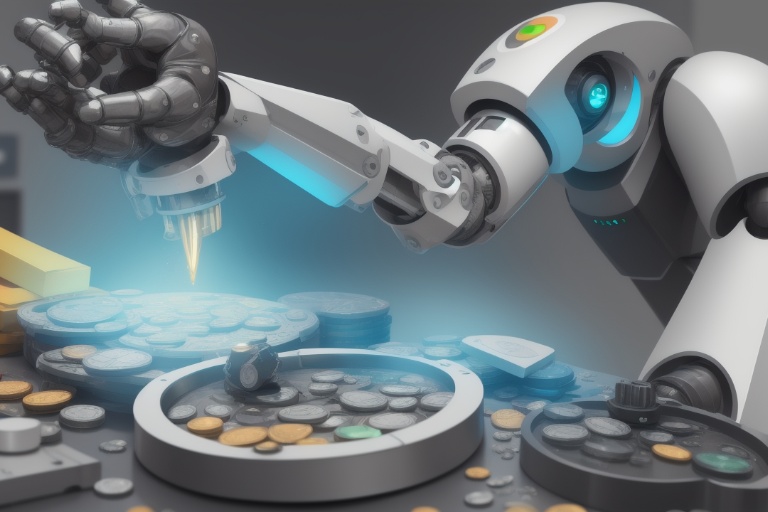Artificial intelligence (AI) has woven itself into the fabric of our society, promising a future where technology not only complements but revolutionizes countless aspects of our daily lives. At its core, AI refers to computer systems endowed with the ability to mirror human cognitive functions. This broad technological landscape features a variety of specialties such as machine learning, natural language processing, and speech and image recognition. Crucially, AI's engine is powered by cutting-edge hardware and software designed to parse extensive datasets—learning and predicting with an accuracy that often surpasses human capability.
Artificial intelligence (AI) has woven itself into the fabric of our society, promising a future where technology not only complements but revolutionizes countless aspects of our daily lives. At its core, AI refers to computer systems endowed with the ability to mirror human cognitive functions. This broad technological landscape features a variety of specialties such as machine learning, natural language processing, and speech and image recognition. Crucially, AI's engine is powered by cutting-edge hardware and software designed to parse extensive datasets—learning and predicting with an accuracy that often surpasses human capability.
Understanding AI and Machine Learning
How exactly does AI attain such predictive prowess? The journey begins with the ingestion and analysis of colossal data sets. As these systems sift through the data, they uncover correlations and patterns, laying the groundwork for informed decision-making regarding future events. For instance, chatbots acquire the art of conversation by studying numerous dialogue examples, while image recognition tools sharpen their skills by reviewing millions of images.
At the heart of AI programming lie several cognitive skills. Learning is the bedrock, allowing the acquisition of data and the formulation of algorithms to transform that data into actionable insights. Next, these systems must reason—selecting the most appropriate algorithm to realize a specific goal. Equally important is self-correction; algorithms are equipped with mechanisms for ongoing refinement, continually improving accuracy. The final cognitive skill is creativity, where AI harnesses neural networks and statistical methods to conjure new content, from visual art to original compositions.
AI, it is critical to note, is distinct from machine learning and deep learning, although the latter terms are often conflated with AI in the public discourse. Machine learning equips software with the ability to autonomously predict outcomes based on historical data. Deep learning goes further, drawing inspiration from the neural architecture of the human brain to spark innovations such as self-driving cars and complex language processing systems.
AI's Growing Importance in Business and Beyond
The significance of AI extends far beyond the theoretical; it is already reshaping numerous industry practices. By automating tasks traditionally performed by humans—customer service, sales leads, fraud detection, quality control—AI enhances efficiency and accuracy. Moreover, its data processing abilities yield insights at a scale unattainable to human analysts, enabling businesses to make more informed decisions.
The field of AI continues to expand at a breakneck pace, with generative AI now emerging as a transformative force. This technique, capable of creating lifelike text, imagery, and sound, is finding its way into education, marketing, and product design, to name a few areas. Major enterprises such as Google, Apple, Microsoft, and Meta are not just riding the AI wave; they are steering its course, leveraging the technology to innovate and maintain a competitive advantage.
Challenges and Considerations in the Age of AI
Yet AI is not without its controversies and complexities. The technology raises crucial questions about privacy, reveals biases ingrained in its algorithms, and presents a looming specter of job displacement. Navigating this landscape demands a balanced approach, one that addresses these issues with an emphasis on ethical and responsible development. It falls upon organizations, policymakers, and the broader community to assure that AI serves the greater good and minimizes potential harms.
AI's Evolution and the Road Ahead
Since 2011, when IBM's Watson emerged victorious on "Jeopardy!," AI has continually shattered ceilings—particularly in the realm of deep learning—with achievements in areas including image and speech recognition, language translation, and the development of autonomous vehicles. The integration of AI technologies has emboldened industries through heightened efficiency, productivity, and decision-making capacity.
As AI advances, so too does the dialogue regarding its ethical ramifications, along with debates about its impact on employment and privacy. The trajectory of AI innovation promises further advances in explainable AI—systems that can elucidate their decision-making processes—ethical AI, and fairness in AI. Such progress promises to not only transform industries but to enhance quality of life and address broad societal challenges.
The potential that AI harbors is boundless, energizing those at the forefront of this technological revolution. It is an epoch filled with both anticipation and responsibility, an era that beckons us to engage with AI not just as passive spectators, but as active stewards ensuring its maturation into a force for positive change.
Information for this article was gathered from the following source.

